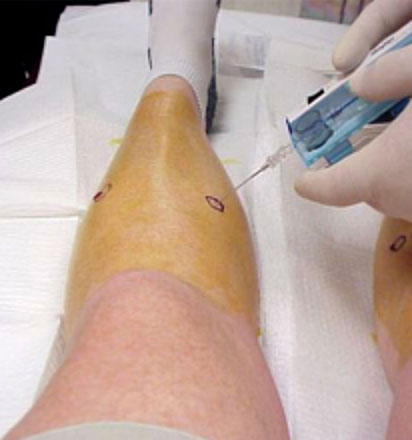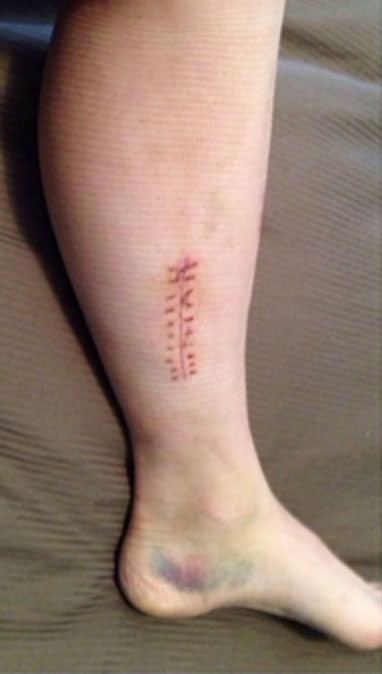6 Figtree Drive Sydney Olympic Park NSW 2127
Chronic Exertional Compartment Syndrome
Dr Scott Burne
Misdiagnosis of exertional lower leg pain continues to be a significant problem for many runners. Despite the distinctive features of chronic exertional compartment syndrome (CECS), it persists as an under-recognised and debilitating condition that literally stops runners in their tracks.
Fortunately, by asking the right questions and understanding the features of the condition, runners can avoid the very long delay in diagnosis that often occurs. Specialised investigations will confirm the diagnosis, but it is important that a careful clinical history is taken before being referred for testing.
The classical features of CECS
A runner’s history may sound something like this: There is no pain at rest. However, pain develops soon in both legs (most cases) during running, after a set time, distance and intensity. This aching pain builds gradually, becoming quite severe, and is associated with “tightness”, where the muscle is often described as being “rock hard”. Upon ceasing running, the pain slowly decreases. Sometimes there are “pins & needles”, often in the foot, or there may be a tender lump in the front of the leg, after exercise.
What causes chronic exertional compartment syndrome?
A distinguishing feature of CECS is elevated muscle pressure during and after exercise. The compartments in the lower legs exist within a relatively tight region, bounded by bone and muscle. When exercising, blood flow to working muscles increases to expand them, but if the muscle does not expand, then pressure builds up in this compartment, causing a great deal of pain.

Figure 1: Compartment pressure testing for chronic exertional compartment syndrome
Compartment Pressure Testing
CECS is confirmed with a specialised investigation: compartment pressure testing. This test will be administered by an experienced Sports and Exercise Medicine Physician, with specialised equipment in an exercise setting. Testing is done before and 1 minute after running (usually 10-15 minutes) where the pain is experienced in one or both legs.
A needle, attached to a pressure measuring device (figure 1), is passed into the muscle after local anaesthetic is given. The pressure is usually low at rest. The needle is withdrawn and testing proceeds to all areas. Then running is undertaken until pain recurs. The testing is repeated as soon as possible (usually at 1 minute after stopping exercise).
Treatment of CECS
Unfortunately, non-operative treatment of CECS is usually only successful where patients cease, or greatly reduce their activity. In most cases, those who want to remain active are referred to a surgeon for an operation (“fasciotomy”) to divide the outer layer of muscle (called “fascia”) lengthways in the affected areas. Techniques differ slightly.
CECS is a common condition in runners, but is under-recognised by many treating practitioners. It has distinctive features, and recognising these is the key to appropriate management. Other conditions can mimic CECS, so the diagnosis rests on a good history, confirmed by clearly positive intra-compartmental post-exercise pressure findings. Posterior CECS is more challenging, not least because of the challenges of a correct diagnosis. Despite varying results, surgery offers the best likelihood of successful return to pain-free running.

Figure 2: Post-operative fasciotomy wound for deep posterior chronic compartment syndrome
View all our fact sheets
Sydney Sports Medicine Centre
Level 2, NSWIS Building
6 Figtree Drive
Sydney Olympic Park
NSW 2127
Written Correspondence
PO Box 3275
Rhodes NSW 2138
(02) 9764 3131 (02) 9764 3443
Appointments are available for some disciplines:
Mon - Fri
Saturdays
6:30am - 7:30pm
6:30am - 1:30pm
Reception is open:
Mon - Thurs
Fridays
Saturdays
8:00am - 7:00pm
8:00am - 6:00pm
8:00am - 1:00pm
